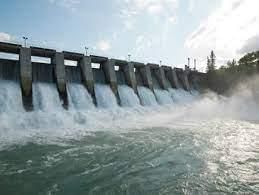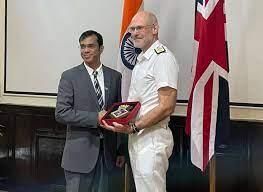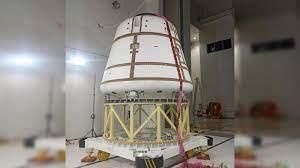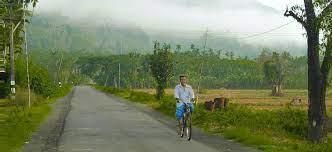Weekly Current Affairs (22nd to 30th April 2024) | General Test Preparation for CUET UG - CUET Commerce PDF Download
MEIL Wins 2,000 MW Sharavathi Pumped Storage Power Project
- Megha Engineering and Infrastructure (MEIL), headquartered in Hyderabad, has secured the prestigious Sharavathi pumped storage power project in Karnataka, marking a significant stride in addressing the state's power needs. Valued at over Rs 8,000 crore, this project is slated to become the country's largest pump storage power facility, with a capacity of 2,000 megawatts, and is scheduled for completion within five years.
- The Sharavathi pumped storage power project will utilize Talakalale as its upper reservoir and Gerusoppa as the lower dam, leveraging the natural resources of the Sharavathi river. Its strategic location underscores its importance in bolstering Karnataka's hydroelectric power capabilities. By offering a flexible solution to the state's power crisis, it aims to mitigate fluctuations in electricity demand.
- Pumped storage hydel projects are recognized for their ability to store surplus energy during periods of low demand and release it when demand peaks, ensuring efficient energy management. This mechanism aligns with the project's objective of providing a reliable and adaptable energy source to meet the dynamic needs of Karnataka.
- MEIL, a key player in India's infrastructure landscape, has demonstrated its expertise and capacity to undertake large-scale projects like the Sharavathi pumped storage power project. Established in 1989, MEIL has garnered acclaim for its contributions across various sectors, including irrigation, power, transportation, and mining. Notable achievements include the successful execution of projects like the Kaleshwaram Lift Irrigation Project and the Polavaram Irrigation Project.
- Beyond national borders, MEIL has expanded its footprint to countries like Nepal, Bangladesh, and Saudi Arabia, solidifying its reputation as a global infrastructure leader. The company's commitment to excellence is underscored by accolades such as the "Best Infrastructure Company" award from the Economic Times in 2019.
- Through its corporate social responsibility initiatives, MEIL actively engages in uplifting communities by investing in education, healthcare, and rural development. With the Sharavathi pumped storage power project, MEIL further cements its position as a trailblazer in the infrastructure sector, contributing to Karnataka's journey towards a more sustainable and reliable energy future.
G7 Discusses Coal Phase-Out by 2035
During their meeting in Turin, Italy, the G7 energy ministers deliberated on a potential timeframe for the gradual phase-out of coal-fired power plants, aligning with their commitment to shift away from reliance on fossil fuels. These discussions follow the global pledge made during the UN’s COP28 climate summit in December, where nations affirmed their intention to move beyond coal, oil, and gas.
Proposed Coal Phase-Out Schedule
- The G7 energy ministers are nearing consensus on a shared objective to decommission coal-fired power facilities.
- The suggested timeline aims to eliminate coal-based electricity generation by the early 2030s, potentially targeting cessation by 2035.
- The latest draft agreement within the G7 proposes ending unabated coal power generation within the first half of the 2030s, or within a timeframe conducive to maintaining the 1.5°C temperature rise limit, a critical climate threshold.
G7's Climate Objectives and Progress
- Comprising Canada, France, Germany, Italy, Japan, the UK, and the US, the G7 collectively represents approximately 38% of the global economy and was responsible for 21% of total greenhouse gas emissions in 2021.
- Despite this significant share, analyses by the Climate Analytics policy institute indicate that none of the G7 members are currently on track to meet their existing emission reduction targets for 2030.
Current Focus under Italy’s G7 Presidency
- Italy, holding the G7 rotating presidency in the present year, aims for the Turin meeting to serve as a strategic bridge between COP28 and the upcoming COP29 in Azerbaijan.
- Given Italy's vulnerability to climate change impacts such as wildfires, droughts, and glacier retreat, the nation prioritizes discussions on biodiversity, ecosystem preservation, and ocean warming.
- Ministers are engaging in dialogues covering renewable energy, energy efficiency, fossil fuel phase-out, next-generation nuclear power, fusion, circular economy practices, critical material management, and biofuel advancements.
Calls for Enhanced Ambition and Financial Support
- The Alliance of Small Island States (AOSIS) urges the G7 to adopt considerably more ambitious emissions reduction plans, citing the severe consequences of rising sea levels and extreme weather events on their populations.
- Observing the urgent need for increased funding to support climate adaptation efforts, Italy confirms that the G7 is exploring innovative financial mechanisms to enhance accessibility to financing for vulnerable nations.
About the G7
- Established in 1975 as the Group of Six (G6), later expanding to include Canada in 1976.
- Comprising major industrialized nations, the G7 represents approximately 40% of global GDP and 10% of the world’s population.
- Annual summits facilitate discussions and coordination on global issues spanning economic growth, trade, climate change, and international security.
- While decisions within the G7 are not legally binding, they carry considerable political weight.
- The G7 presidency rotates among member countries on an annual basis, with the host nation responsible for setting the summit's agenda and organizing proceedings.
- Nevertheless, achieving the goals outlined in COP agreements will require more ambitious strategies, decisive actions, and substantial financial backing, as emphasized by the UN and other stakeholders, to effectively combat climate change and assist vulnerable communities in adapting to its effects.
India and UK held meeting on Electric Propulsion for Navy
- India and the United Kingdom are in talks to exchange technical know-how and expertise regarding maritime electric propulsion systems, aiming to fulfill the future needs of Indian naval vessels. Additionally, both nations are exploring the possibility of a training pact to bolster cooperation within their armed forces.
- Presently, Indian naval ships lack electric propulsion systems, but there's a keen interest in integrating this technology into upcoming warships. Notably, the UK's Queen Elizabeth Class aircraft carriers serve as examples of fully integrated electric propulsion vessels.
- Maritime electric propulsion technology signifies a shift from traditional mechanical systems to electric motors, offering benefits such as enhanced fuel efficiency, reduced emissions, improved maneuverability, and decreased maintenance costs. It can draw power from various sources like batteries, fuel cells, or generators and finds application across a spectrum of vessels, including ferries, cruise ships, and military craft.
- A collaborative effort between India and the UK has resulted in the establishment of a joint working group on electronic propulsion. Initial discussions began in the UK in February 2023, followed by a delegation meeting aboard HMS Lancaster during its Kochi visit in March 2023. Presently, talks are exploratory in nature.
- With over two decades of experience in developing maritime electric propulsion technology, the UK is poised to share its insights and expertise with India. This collaboration holds promise for India, potentially expediting the development of electric propulsion systems for its naval fleet and providing access to advanced core technologies for indigenous, ITAR-free jet engine production, potentially leading to the manufacturing and export of Indian-owned jet engines with UK technological support.
- Furthermore, the UK has outlined plans to bolster its maritime presence in the Indo-Pacific region, with new frigates earmarked for potential deployment. This includes the operation of two littoral response groups, one in the Euro-Atlantic and the other in the Indian Ocean Region. These discussions lay the groundwork for future joint endeavors in advancing naval capabilities.
200 More Gati Shakti Cargo Terminals: Indian Railways
- The Indian Railways has outlined plans to establish an additional 200 Gati Shakti Cargo Terminals (GCTs) to enhance freight revenue, alleviate congestion in rail networks, and facilitate quicker movement of passenger trains. This extension follows the successful rollout of the initial 100 GCTs announced in the Union Budget for 2022-23.
- GCTs, serving as multi-modal terminals utilized by corporations for handling bulk cargo transported via rail, are established under a policy allowing for the monetization of vacant Railway land through public-private partnerships (PPPs). The first 100 GCTs were slated to be established over a span of 5 years, starting from 2022-23.
- Regarding the progress of Phase 1, 77 out of the initial 100 GCTs have already been commissioned at a cost of approximately ₹5,400 crore. These terminals are strategically located in states such as West Bengal, Jharkhand, Odisha, Telangana, Tamil Nadu, and Uttar Pradesh, with major operators including Concor, Reliance, Adani, JSW, IOCL, and BPCL among others. The remaining terminals are anticipated to become operational by the conclusion of FY 2024-25.
- Expanding on the successful deployment of the first phase, Railways plans to initiate tenders for an additional 200 GCTs once the first 100 are completed. The establishment of these additional terminals is estimated to necessitate private investments ranging from ₹12,000 to ₹14,000 crore. Each terminal is projected to incur an average cost of ₹65-70 crore, varying from ₹50 crore to higher amounts.
- GCTs can be developed through two models: On non-Railway land, where private entities identify the location and construct the terminal after obtaining requisite approvals, and on Railway land (fully/partially), where Railways identify land parcels, and the operator for construction and operation is selected through open tendering.
- In its endeavor to enhance its share in India’s freight traffic from the current 29% to 35% by 2030, Railways carried approximately 1,600 million tonnes (mt) of the total 5,500 mt cargo moved across the country in FY24. Notable commodities transported include coal (787.6 mt), iron ore (181 mt), cement (154 mt), and other volume-based items like white goods. The development of GCTs is anticipated to facilitate expedited goods movement and alleviate track congestion for passenger trains. Railways also plans to add 5,000 km of new tracks annually for the next 3-5 years to support the increased freight capacity.
- Gati Shakti Cargo Terminals, a pivotal initiative of the Indian Railways aimed at bolstering its freight business and attracting private investment, were launched in 2022 as part of the PM Gati Shakti National Master Plan. Their objective is to develop multimodal logistics facilities and reduce logistics costs, with a target of developing 100 terminals over 5 years (2022-2027) under a Public-Private Partnership (PPP) model and private sector investment. Positioned on railway land or private land near railway facilities, these terminals offer facilities such as warehousing, cold storage, customs clearance, and value-added services, thereby reducing handling time, enhancing efficiency, and increasing the railway’s modal share in freight transport. Gati Shakti Cargo Terminals are poised to revolutionize India’s logistics landscape and contribute significantly to the country’s economic growth.
Ozone Depletion and Its Impact on Antarctic Biota
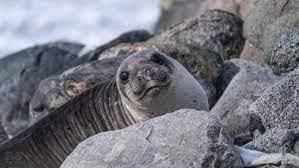
A recent study featured in the journal Global Change Biology has drawn attention to the ongoing ozone depletion in Antarctica and its potential ramifications for the region's plant and animal life. The study underscores that while the ozone hole, an annual occurrence over Antarctica during spring, has shown signs of reduction over the past 25 years, it has persisted for an unusually prolonged period over the last four years.
Significance of the Ozone Layer
- The ozone layer, situated in Earth's stratosphere, acts as a shield against most of the Sun's ultraviolet (UV) radiation, notably UV-B rays.
- Ozone depletion arises from the interaction between chlorofluorocarbons (CFCs) and other ozone-depleting substances (ODS) emitted through human activities and UV rays, leading to the breakdown of ozone molecules.
- The Montreal Protocol, established in 1987, has been effective in phasing out the production of CFCs and other ODS, resulting in a gradual recovery of the ozone layer.
Implications of Prolonged Ozone Depletion
- The study indicates that the prolonged ozone depletion until late December is worrisome as it aligns with the onset of the austral summer. During this period, heightened UV-B radiation, coupled with snowmelt and the emergence of vegetation, exposes Antarctic biota to increased harm from radiation. Moreover, the start of summer coincides with the peak breeding season for numerous animals, exposing them to extreme UV-B exposure (with a UV index reaching up to 14) at a vulnerable phase in their life cycles.
Antarctic Ozone Hole Overview
- The Antarctic ozone hole was initially detected in 1985 by scientists from the British Antarctic Survey.
- Its formation occurs during the Antarctic spring (September to November), facilitated by cold temperatures that enable the formation of polar stratospheric clouds, providing a platform for ozone-depleting reactions.
- The ozone hole reached its maximum size in 2006, spanning 29.6 million square kilometers (11.4 million square miles), approximately the size of North America.
- The recovery of the ozone layer is anticipated to span several decades, with projections suggesting the Antarctic ozone hole will vanish by the 2060s.
Montreal Protocol Synopsis
- The Montreal Protocol is an international treaty devised to safeguard the ozone layer by phasing out the production and consumption of ODS.
- With ratification from 197 countries, it stands as the first United Nations treaty to achieve universal ratification.
- Since its implementation, the protocol has effectively reduced atmospheric concentrations of major ODS, such as CFCs and halons, by over 90%.
- The absence of the Montreal Protocol would have led to the collapse of the ozone layer by 2050, carrying severe repercussions for life on Earth.
- Continued research efforts and international collaboration are imperative for comprehending and addressing the consequences of ozone depletion, thereby ensuring the preservation of Antarctic ecosystems.
KAIST Researchers develop High-Power, Fast-Charging Sodium-Ion Battery
- Researchers at the Korea Advanced Institute of Science and Technology (KAIST) have unveiled a groundbreaking hybrid sodium-ion battery with exceptional high-energy and high-power capabilities, enabling rapid charging in seconds. This innovation holds the promise of transforming the energy storage sector and offering a compelling alternative to traditional lithium-ion batteries.
- Sodium, being more than 500 times abundant compared to lithium, emerges as a cost-effective and widely available alternative. While sodium-ion batteries have previously encountered challenges such as lower power output, limited storage capacities, and extended charging durations, the development of advanced sodium-ion batteries with enhanced performance is imperative for widespread adoption.
KAIST's Hybrid Sodium-Ion Battery Overview:
- Conceived by Professor Jeung Ku Kang and his team from the Department of Materials Science and Engineering at KAIST.
- Integrates anode materials commonly found in batteries with cathodes optimized for supercapacitors.
- Achieves remarkable storage capacities and swift charge-discharge rates, overcoming the slow energy storage inherent in battery-type anodes and the limited capacity of supercapacitor-type cathodes.
Key Innovations:
- Employed two distinct metal-organic frameworks to optimize the synthesis of hybrid batteries.
- Developed anode material featuring enhanced kinetics by incorporating finely tuned active materials within porous carbon derived from metal-organic frameworks.
- Synthesized a high-capacity cathode material while ensuring a balanced energy storage rate between electrodes.
Performance and Potential Applications:
- Assembled full cell surpasses the energy density of commercial lithium-ion batteries.
- Exhibits power density akin to supercapacitors, enabling rapid charging with an energy density of 247 Wh/kg and power density of 34,748 W/kg.
- Expected to find broad applications in diverse electronic devices, electric vehicles, and aerospace technologies.
Significance and Future Prospects:
- Represents a significant breakthrough in overcoming existing limitations of energy storage systems.
- Positions sodium-ion batteries as a compelling next-generation alternative to lithium-ion batteries.
- Could potentially fulfill the growing demand for affordable, high-performance electrochemical energy storage devices.
- Further research and development efforts are necessary to scale up and commercialize the technology.
As the quest for sustainable energy solutions gains momentum, innovations like the hybrid sodium-ion battery developed by KAIST could play a pivotal role in reshaping the landscape of energy storage technology.
ISRO Plans Second Uncrewed Gaganyaan Test
ISRO is on the brink of achieving another significant milestone with its illustrious Gaganyaan mission, marking India's inaugural foray into human spaceflight.
Gaganyaan Mission Timeline:
- The upcoming second uncrewed test flight is on the agenda.
- Subsequently, two additional uncrewed missions are slated for 2025.
- Assuming all progresses smoothly, the manned mission is earmarked for completion by the conclusion of 2025.
Recent Achievements:
- In October 2023, ISRO conducted a successful In-flight Abort Demonstration of the Crew Escape System (CES) at Mach number 1.2, employing a freshly developed Test Vehicle.
- The exercise encompassed various objectives, including the flight demonstration and evaluation of Test Vehicle subsystems, CES assessment, and the demonstration of Crew Module characteristics and deceleration systems at elevated altitudes.
About the Human Space Flight Centre (HSFC):
- Serving as the focal point for human spaceflight endeavors, HSFC will spearhead the Gaganyaan program.
- It will orchestrate collaborative efforts and concentrate activities conducted across other ISRO centers, research laboratories, Indian academia, and industries to accomplish the mission.
- Critical technologies such as life support systems, human factors engineering, crew training, and human rating and certification will be developed under HSFC's auspices.
Gaganyaan Mission Objectives:
- The mission's primary goal is to demonstrate human spaceflight capabilities by dispatching a crew of three members to a 400 km orbit for a 3-day mission.
- The safe return of the crew to Earth, with a splashdown in Indian sea waters, constitutes a pivotal aspect of the mission's objectives.
Launch Vehicle:
- ISRO will employ its cutting-edge LVM3 rocket, a proven and dependable heavy-lift launcher, for the Gaganyaan mission.
- The LVM3 will undergo reconfiguration to adhere to human rating requirements and facilitate the launch of the Orbital Module into a Low Earth Orbit of 400 km.
Orbital Module:
- Comprising the Crew Module (CM) and the Service Module (SM), the Orbital Module is a vital component of the mission.
- The CM serves as the habitable space for the crew, outfitted with life support systems, avionics, and deceleration systems, while the SM furnishes essential support during orbit, housing thermal, propulsion, power, and avionics systems.
Key Aspects of the Mission:
- Gaganyaan is anticipated to incur a cost of approximately Rs. 10,000 crore (around $1.2 billion).
- Upon its realization, India will join the ranks of the United States, Russia, and China as the fourth country to send humans to space.
- The crew module boasts dimensions of 3.7 meters in diameter, 7 meters in height, with a mass of roughly 7 tonnes.
- ISRO has pioneered new technologies such as the Crew Escape System to ensure crew safety in the event of an emergency during launch or ascent phases.
About ISRO:
- Established in 1969, ISRO stands as India's national space agency, renowned for its remarkable achievements.
- Notable missions include Chandrayaan (Moon), Mangalyaan (Mars), and Aditya-L1 (Sun), alongside the groundbreaking Gaganyaan mission.
- The agency has developed indigenous launch vehicles such as PSLV, GSLV, and SSLV, with the Vikram Sarabhai Space Centre (VSSC) serving as a key facility for rocket development.
The successful execution of the second uncrewed test flight holds pivotal significance in the realization of India's ambitious Gaganyaan mission.
Great Nicobar Island Development Project
The Rs 72,000 crore ‘Great Nicobar Island Development Project,’ designed for the comprehensive advancement of the Great Nicobar Island, has come under scrutiny due to its potential ramifications for the indigenous Shompen and Nicobarese communities. Experts have voiced concerns about the project’s approvals breaching constitutional mandates and disregarding the perspectives of the tribal populations.
Project Overview:
- Managed by NITI Aayog and executed by the Andaman and Nicobar Islands Integrated Development Corporation (ANIIDCO), the project encompasses the establishment of a transshipment port, an international airport, a township, and a power plant.
- More than half of the project site overlaps with the Tribal Reserve Area, which is presently utilized by the Shompen, an exceptionally vulnerable tribal group.
- The Ministry of Environment, Forest and Climate Change (MoEFCC) granted the final environmental clearance in November 2022.
Expert Concerns:
- De-notification of Tribal Reserve: An Empowered Committee of the UT administration suggested the de-notification of the tribal reserve area, which experts argue contravenes constitutional provisions.
- Questionable Justioficatin: ANIIDCO's assessment of the remaining protected tribal reserve area has been deemed "flawed" by experts.
- Lack of Consultation: Allegations suggest that the perspectives of the Shompen and Nicobarese communities were disregarded during the decision-making process.
- Legal Ambiguities: Experts contend that the project approvals are fraught with legal uncertainties.
Impact on Indigenous Communities:
- The Shompen and Nicobarese communities depend on the forested and riparian zones within the proposed project site for sustenance and habitat.
- The de-notification of the tribal reserve area adversely affects the interests of these tribal groups.
- The ancestral villages of the Great Nicobarese, situated on the southeastern and western coasts, fall within the project zone.
Procedural Concerns:
- The circular pertaining to the de-notification and re-notification of the Tribal Reserve Area has not been made accessible to the public.
- The minutes of the Empowered Committee meetings remain undisclosed.
- Experts argue that the A&N administration violated a crucial constitutional directive by issuing the de-notification order without proper consultation with the affected tribal communities.
About Tribal Status in Andaman and Nicobar:
- The Andaman and Nicobar Islands are inhabited by six indigenous tribes, with the Shompen and Nicobarese residing in the Great Nicobar Island.
- The Shompen, numbering around 200-300 individuals, are a hunter-gatherer community.
- The Nicobarese, a larger tribal group with approximately 27,000 members, are dispersed across the Nicobar Islands.
- The Tribal Reserve Area in the Great Nicobar Island was established under the Andaman and Nicobar Islands (Protection of Aboriginal Tribes) Regulation, 1956, to safeguard the interests of the indigenous communities.
- About The Andaman and Nicobar Islands (Protection of Aboriginal Tribes) Regulation, 1956:
- Enables the protection of the interests of indigenous tribes in the Andaman and Nicobar Islands.
- Facilitates the creation of Tribal Reserve Areas, with the authority to notify and de-notify Tribal Reserves vested in the islands’ administrator.
- Six indigenous tribes inhabit the islands, including the Shompen and Nicobarese in the Great Nicobar Island.
- Concerns have been raised regarding potential violations of PAT56 in the Great Nicobar Project.
- There is a pressing need for a more inclusive and transparent approach in implementing development projects in ecologically sensitive regions inhabited by indigenous communities.
Atul Goel Panel to Finalize List of OTC Drugs for Sale at General Stores
The government has established a three-member committee of gynecologists tasked with finalizing a list of over-the-counter (OTC) drugs that will be available for purchase at general stores without requiring a prescription. Chaired by the Directorate General of Health Services Atul Goel, the committee aims to compile the list within a two-week timeframe. This initiative aligns with India's new OTC drug policy, which aims to lower treatment expenses, encourage self-care, and uphold safety standards.
Primary Goals:
- Enhance accessibility to commonly used medications, particularly in rural regions.
- Decrease treatment costs for the populace.
- Encourage responsible self-care practices.
- Ensure the safety and efficacy of OTC drugs.
Current Status of OTC Drugs in India:
- India presently lacks a definitive policy governing the distribution, marketing, and consumption of OTC drugs.
- Commonly utilized medications for ailments like cough, colds, and contraceptives are frequently sold without proper regulatory guidelines.
- The Drugs & Cosmetics Act, 1940, and the Drugs & Cosmetics Rules, 1945, do not delineate OTC medicines.
Inclusion Criteria for OTC List:
Selection of OTC drugs will be based on the following criteria:
- Safety evidence.
- Availability.
- Non-addictive properties.
- Suitability for self-medication.
About The Drugs Technical Advisory Board (DTAB):
- The DTAB is a statutory body operating under the Ministry of Health and Family Welfare, offering technical advice to both Central and State governments regarding drugs and cosmetics.
- Established pursuant to the Drugs and Cosmetics Act, 1940.
- Comprises experts from diverse fields including medicine, pharmaceuticals, and chemistry.
- Offers recommendations to ensure the safety, efficacy, and quality of drugs and cosmetics.
- Provides guidance on matters pertaining to drug and cosmetic import, manufacture, distribution, and sale.
- Plays a pivotal role in shaping India’s drug regulatory policies.
While numerous countries, such as the United States, United Kingdom, and China, have well-established guidelines for the classification, use, and regulation of OTC medicines, the global OTC drugs market is anticipated to reach $178.8 billion by 2026, with a projected CAGR of 6.1% from 2021 to 2026. In India, the OTC drugs market is valued at $7.8 billion as of 2022, with an estimated CAGR of 9.2% from 2022 to 2027. Nevertheless, ensuring the implementation of proper guidelines and regulations is imperative to uphold the safety and efficacy of drugs listed as OTC.
Indian Navy Women Officers Complete Historic Transoceanic Expedition
Lieutenant Commander Dilna K. and Lieutenant Commander Roopa A., two female officers of the Indian Navy, etched their names in history by completing a nearly two-month transoceanic voyage aboard the Indian Naval Sailing Vessel (INSV) Tarini. They become the first Indian women to accomplish this extraordinary feat. The expedition commenced from Goa on February 28, 2024, and culminated with Tarini's triumphant return to its home port on April 21, 2024.
Key Expedition Highlights:
- Lt Cdr Dilna K. and Lt Cdr Roopa A. navigated the Indian Ocean for 22 days before arriving at Port Louis, Mauritius, on March 21, 2024.
- During their stay in Mauritius, they engaged with officials from the Mauritius Coast Guard and Indian High Commission, bolstering bilateral relations between the two maritime nations.
- INSV Tarini also conducted a training session with Mauritian Coast Guard personnel on board.
- The officers encountered challenging conditions such as strong winds, rough seas, and adverse weather during their return voyage commencing on March 30th. However, their exceptional seamanship, resilience, and unwavering determination enabled them to surmount these obstacles and safely guide Tarini back to Goa.
About the Indian Navy:
- Established on January 26, 1950, the Indian Navy is the naval arm of the Indian Armed Forces, tasked with safeguarding India’s maritime interests and ensuring security in the Indian Ocean Region. It ranks as the world’s seventh-largest navy by active personnel and operates a diverse fleet of ships, submarines, and aircraft.
Additional INSV Tarini Facts:
- INSV Tarini, an Indian Navy sailing vessel, has served as the platform for several historic expeditions, notably the first Indian all-women circumnavigation of the globe in 2017-18. The vessel, a 56-foot sloop, was constructed in India and commissioned into the Navy in 2017.
- Named after the Tara-Tarini temple in Ganjam district, Odisha, INSV Tarini boasts all-female crews and is utilized for oceanic sailing expeditions. In 2017-18, six women officers circumnavigated the globe on INSV Tarini in 254 days.
- The vessel continues to undertake various naval expeditions and training exercises.
- INSV Tarini symbolizes the Indian Navy's commitment to promoting oceanic sailing expeditions to equip its personnel with essential seamanship and navigation skills.
- This historic expedition led by Lt Cdr Dilna and Lt Cdr Roopa represents a significant milestone in the Indian Navy's endeavors to empower women.
D Gukesh wins 2024 FIDE Candidates Chess Tournament
Seventeen-year-old Indian Grandmaster D Gukesh, hailing from Chennai, has etched his name in history by emerging victorious in the 2024 FIDE Candidates Chess Tournament held in Toronto, Canada. His triumph makes him the youngest challenger ever for the World Chess Championship, surpassing a record previously held by Garry Kasparov since 1984.
- Gukesh becomes only the second Indian, following in the footsteps of Viswanathan Anand, to secure victory in the prestigious Candidates Tournament and earn the right to challenge the reigning World Champion.
Gukesh’s Remarkable Performance in the Candidates Tournament:
- He achieved an impressive score of 9 out of 14 possible points in the double round-robin tournament featuring eight formidable players.
- Securing the title, he drew his final round game against American Grandmaster Hikaru Nakamura.
- The young prodigy had to await the outcome of the match between Fabiano Caruana (USA) and Ian Nepomniachtchi (FIDE) to confirm his outright victory.
- Nakamura, Nepomniachtchi, and Caruana finished tied for second place with 8.5 points each.
Anticipated World Chess Championship Match:
- As the winner of the Candidates Tournament, Gukesh now earns the privilege to challenge the current World Chess Champion, Ding Liren of China.
- Details regarding the dates and venue for the World Championship match are yet to be finalized.
- This forthcoming match will mark Gukesh's inaugural appearance in a World Championship encounter, while Ding Liren will be defending his title for the first time.
Gukesh’s Chess Career Highlights:
- At the age of 12, Gukesh became the third-youngest player in history to achieve the esteemed Grandmaster title.
- He secured a silver medal at the 2023 Hangzhou Asian Games, showcasing his prowess on the international stage.
- Consistently demonstrating remarkable progress, Gukesh has now firmly established himself as a formidable contender in the global chess arena.
Other Notable Performances by Indian Players:
- R Praggnanandhaa, another promising young Indian Grandmaster, concluded the Candidates Tournament in fifth place with 7 points.
- In the Women’s Candidates Tournament, Indian players Koneru Humpy and R Vaishali shared the second position with 7.5 points each, alongside China's Lei Tingjie.
- The victor of the Women’s Candidates Tournament, Tan Zhongyi of China, will challenge the reigning Women’s World Champion, Ju Wenjun, also from China.
Insights into the World Chess Championship:
- An annual event organized by the World Chess Federation (FIDE) to determine the world champion in chess.
- The first official world championship took place in 1886, with notable champions including Wilhelm Steinitz, Jose Raul Capablanca, Bobby Fischer, and Viswanathan Anand.
- Under the current format, the winner of the Candidates Tournament earns the opportunity to challenge the reigning champion in a 12-game match.
- Garry Kasparov holds the record for the youngest world champion, claiming the title at the age of 22 in 1985, while Viswanathan Anand became the first Indian world champion in 2000.
Gukesh’s historic victory in the Candidates Tournament serves as a landmark achievement for Indian chess, underscoring the exceptional talent and potential of the country’s burgeoning generation of chess prodigies.
Intense Heat Wave Grips India
A significant heat wave gripped vast regions of the country, with maximum temperatures soaring four to six degrees Celsius above normal across many areas.
April's Second Heat Wave Episode:
- This ongoing heat wave marks the second spell of intense heat this month. The initial wave scorched portions of Odisha, Jharkhand, Gangetic West Bengal, Telangana, Andhra Pradesh, Tamil Nadu, and Gujarat. Noteworthy temperature peaks included 46°C in Bahargora, Jharkhand, 44.6°C in Baripada, Odisha, 44.5°C in Bankura, West Bengal, 44°C in Bulandshahr, Uttar Pradesh, and 43.6°C in Washim, Vidarbha.
Understanding Heat Waves:
- A heat wave occurs when air temperatures reach levels potentially hazardous to human health upon exposure. It is quantitatively defined based on temperature thresholds over a region, either in terms of actual temperature or deviation from the norm. Some countries define it using the heat index, considering temperature and humidity, or by extreme temperature percentiles.
Criteria for Heat Waves:
- The Indian Meteorological Department (IMD) designates a heat wave when maximum temperatures reach at least 40°C in plains, 37°C in coastal areas, and 30°C in hilly regions, with a departure from normal of at least 4.5°C. Severe heat waves are declared if the deviation exceeds 6.4°C.
Concerns Amid Lok Sabha Elections:
- The IMD's earlier warning of extreme heat during the April-June period coincides with the multi-phase Lok Sabha elections, raising concerns about vulnerability to heat waves. The initial phase of voting has already taken place.
Predictions for April-June Period:
- IMD forecasts anticipate four to eight heat wave days in various regions across April, compared to the usual one to three days. Throughout April-June, 10 to 20 heat wave days are expected nationwide, compared to the typical four to eight days. Regions like Madhya Pradesh, Gujarat, Odisha, Andhra Pradesh, Madhya Maharashtra, Vidarbha, Marathwada, Bihar, and Jharkhand might experience more than 20 heat wave days.
Potential Heat Wave Impacts:
- The intense heat could strain power grids and trigger water shortages in certain Indian regions. Additionally, global weather agencies, including the IMD, anticipate the development of La Niña conditions later in the year, which typically result in abundant rainfall during the monsoon season.
Insights into The India Meteorological Department (IMD):
- Established in 1875, the IMD serves as India's national meteorological service, headquartered in New Delhi. Responsible for meteorological observations, weather forecasting, and seismology, the IMD operates numerous observation stations across India and Antarctica. With specialized divisions and regional offices, it collaborates with international organizations like the WMO and plays a pivotal role in issuing timely warnings during natural calamities such as cyclones.
Recent Temperature Observations:
- The IMD reported maximum temperatures ranging between 42 and 45 degrees Celsius in parts of Odisha, Rayalaseema, Gangetic West Bengal, Jharkhand, Vidarbha, Chhattisgarh, Madhya Pradesh, Telangana, and Andhra Pradesh. Meanwhile, areas in Bihar, Madhya Pradesh, Tamil Nadu, Puducherry, and Uttar Pradesh recorded maximum temperatures between 40 and 42 degrees Celsius.
|
164 videos|800 docs|1157 tests
|
FAQs on Weekly Current Affairs (22nd to 30th April 2024) - General Test Preparation for CUET UG - CUET Commerce
| 1. What is the significance of MEIL winning the 2,000 MW Sharavathi Pumped Storage Power Project? |  |
| 2. What was discussed by the G7 in relation to coal phase-out by 2035? |  |
| 3. What was the focus of the meeting between India and UK on Electric Propulsion for Navy? |  |
| 4. How will the addition of 200 more Gati Shakti Cargo Terminals by Indian Railways benefit the transportation sector? |  |
| 5. What is the impact of ozone depletion on Antarctic biota as discussed in the article? |  |


